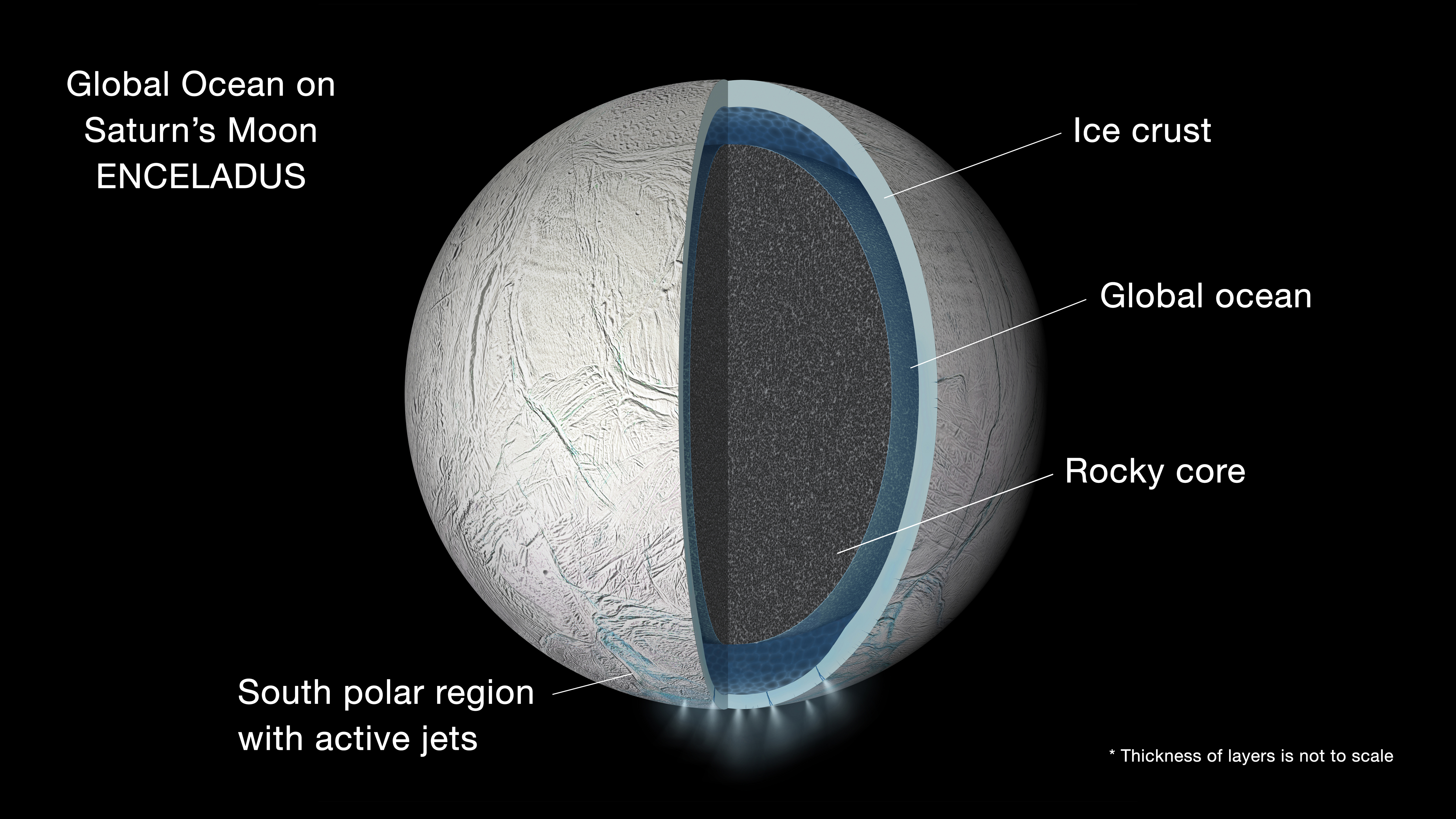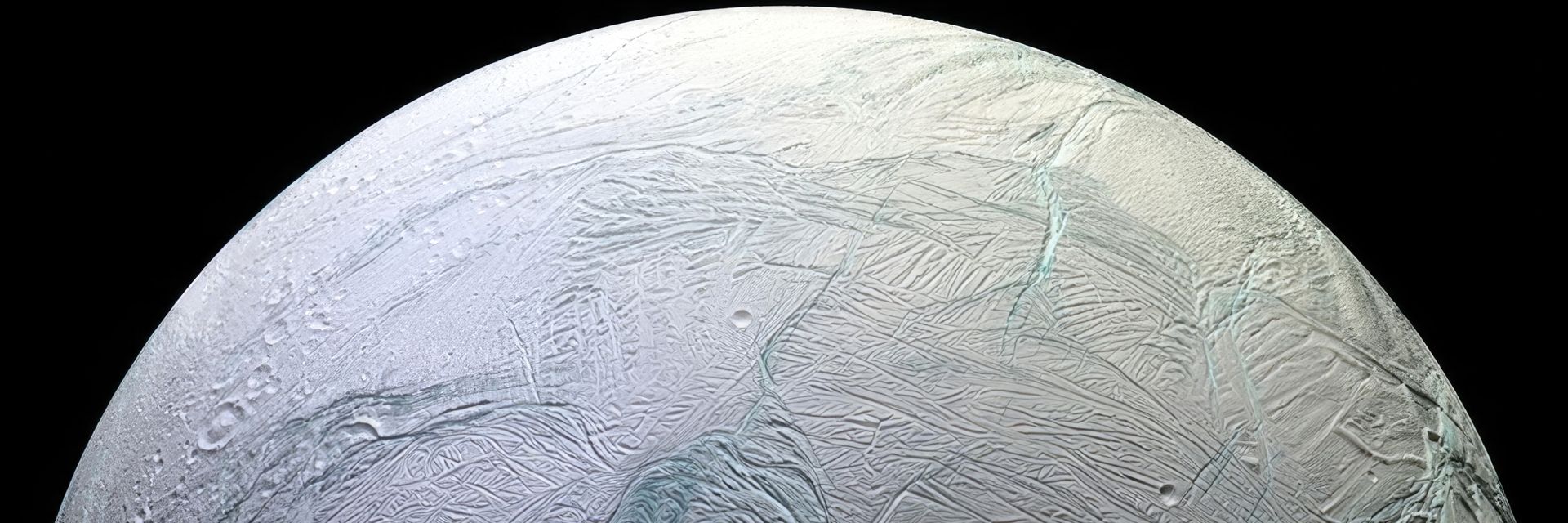Scientists have found the essential building blocks of life on Enceladus. Will life itself eventually be found?
◊
The search for a habitable world beyond Earth received a momentous boost recently when a team of scientists published a paper in the journal Nature confirming the presence of phosphorus in plumes rising from the surface of Saturn’s moon Enceladus. The discovery is based on data collected by NASA’s Cassini spacecraft, which orbited the ringed planet from 2005 to 2017.
Phosphorus is the least abundant of six elements thought to be essential building-blocks for the emergence of life. (The others are carbon, hydrogen, nitrogen, sulfur, and oxygen.) And what’s more, the concentration of phosphorus in the subsurface ocean of Enceladus is an eye-popping 500 times that found anywhere in Earth’s oceans.
For the first time in history, a world other than our planet has satisfied the requirements for being called habitable, even if not necessarily inhabited.
For more on Saturn as documented by the Cassini spacecraft, check out the MagellanTV original documentary Kingdom of Saturn.
Exploring Enceladus
When the Cassini spacecraft arrived on the scene for its epic tour of the Saturnian system. Over 12 years, it flew by Enceladus 11 times, gathering data on each pass to better understand the small world. Cassini found that the moon is covered in a crust composed of water-ice, its surface as diverse as any in the Solar System. Some areas are heavily cratered, while other regions having few, if any, craters display an array of surface features such as ridges, troughs, and canyons that suggest powerful tectonic forces are continually molding the terrain.
The search for signs of life on Enceladus was given a powerful boost when Cassini images showed plumes of water vapor erupting from the south polar region. The geysers are composed of both salty and “fresh” particles, with the heavier salty ones returning to the surface and the fresh particles escaping into Saturn’s E-ring. From the salt in the plumes, scientists have deduced their source to be a subsurface ocean. Later observations detected a distinct “wobble” in Enceladus as it orbits Saturn, suggesting that the ocean is global in scale.

(Credit: NASA/JPL-Caltech, via WikiMedia Commons)
The ocean led scientists to conclude Enceladus is a prime candidate for finding extraterrestrial life in the Solar System. Are there hydrothermal vents deep in the ocean where microbial life could have gotten a foothold? Could it provide a habitat for microorganisms or even algae-like life to cling to the inner surface of the icy crust? Does the moon have the necessary ingredients for life to emerge? With the discovery of phosphorus in the geysers, now we know that the answer to this last question is a resounding Yes!
When Will We Go to Enceladus?
Only a future mission to Enceladus with a primary goal of searching for life can determine for sure whether any living organisms have emerged on the distant, diminutive world. As it happens, even before the unprecedented findings of the Freie Universität researchers, NASA had begun to lay plans for such a mission. The Enceladus Orbilander mission is currently planned to launch in 2038, with arrival at the moon planned for 2050.
That’s a long wait, but planning and execution of such ambitious, multibillion dollar missions take a lot of lead time. So, set an alert on your smartphone as a reminder to check the news in 27 years for a headline that might flash around the world: “Life Found on Enceladus.” For us Earth-dwellers, life could never be the same.
Ω
Editor’s Note: This article is partly adapted from one published in 2016 by SpaceRip, a predecessor of MagellanTV. That article is no longer available.
Title Image: Cassini spacecraft image of the surface of Enceladus (Credit: NASA/JPL-Caltech)

